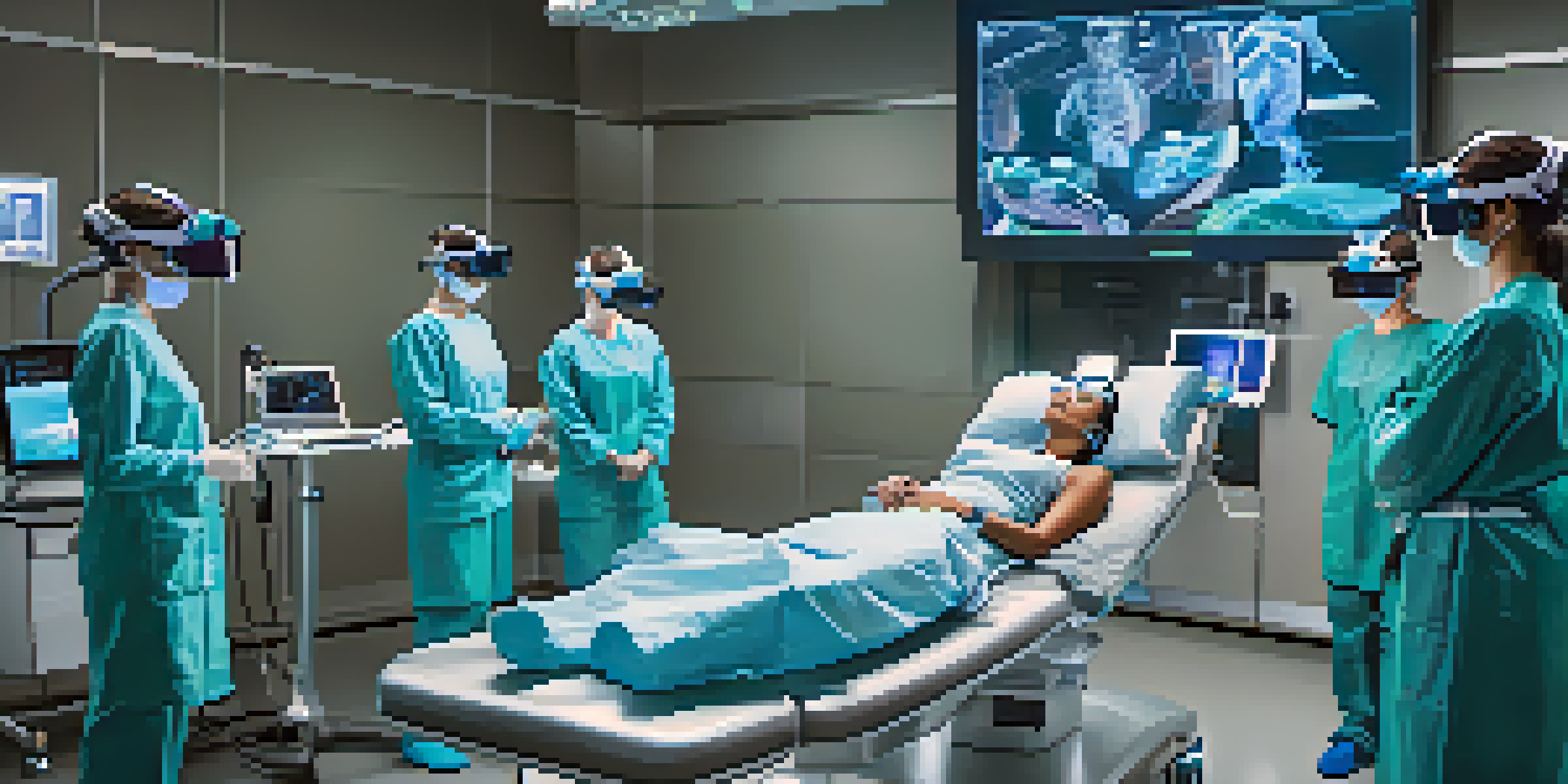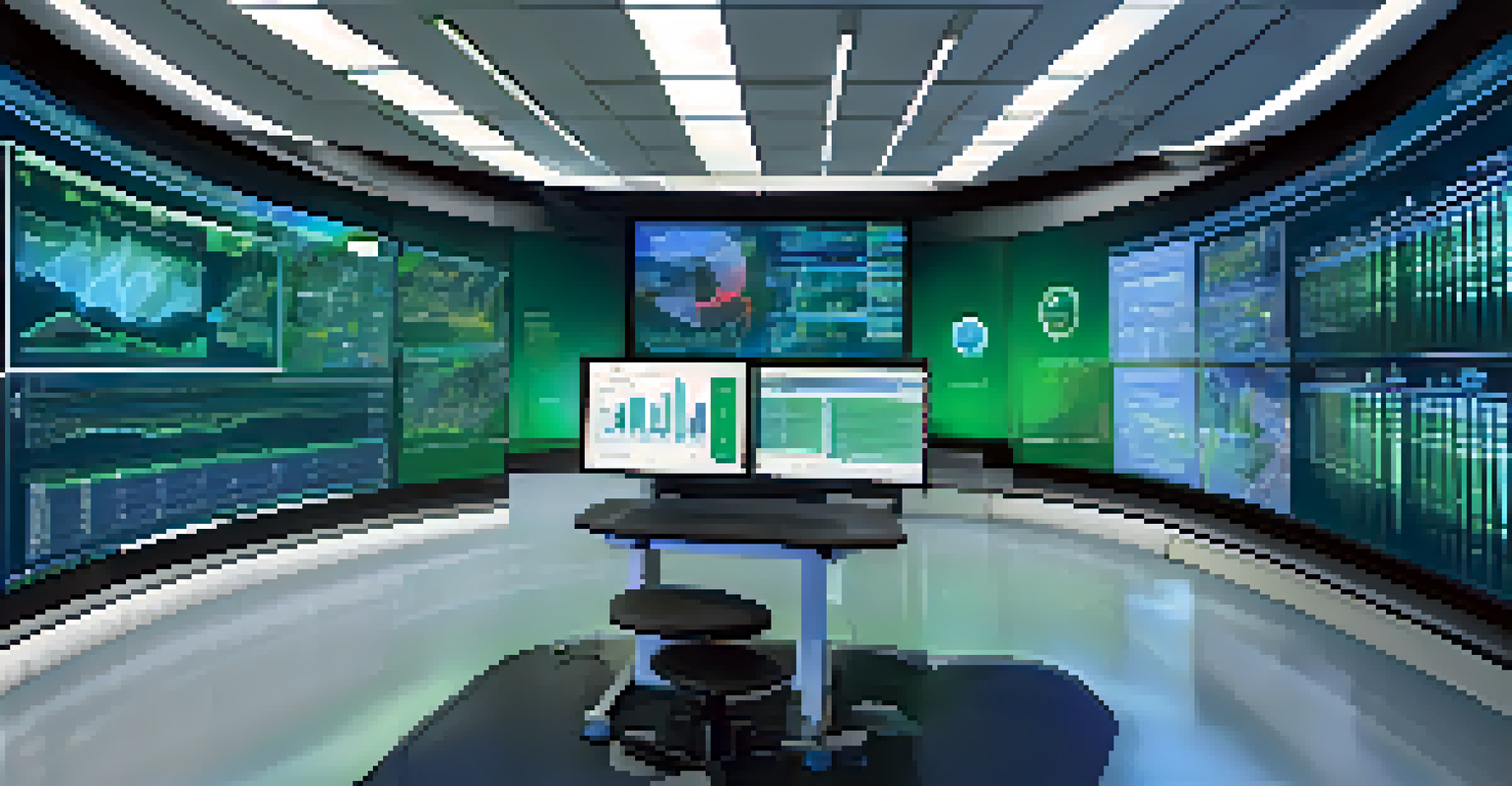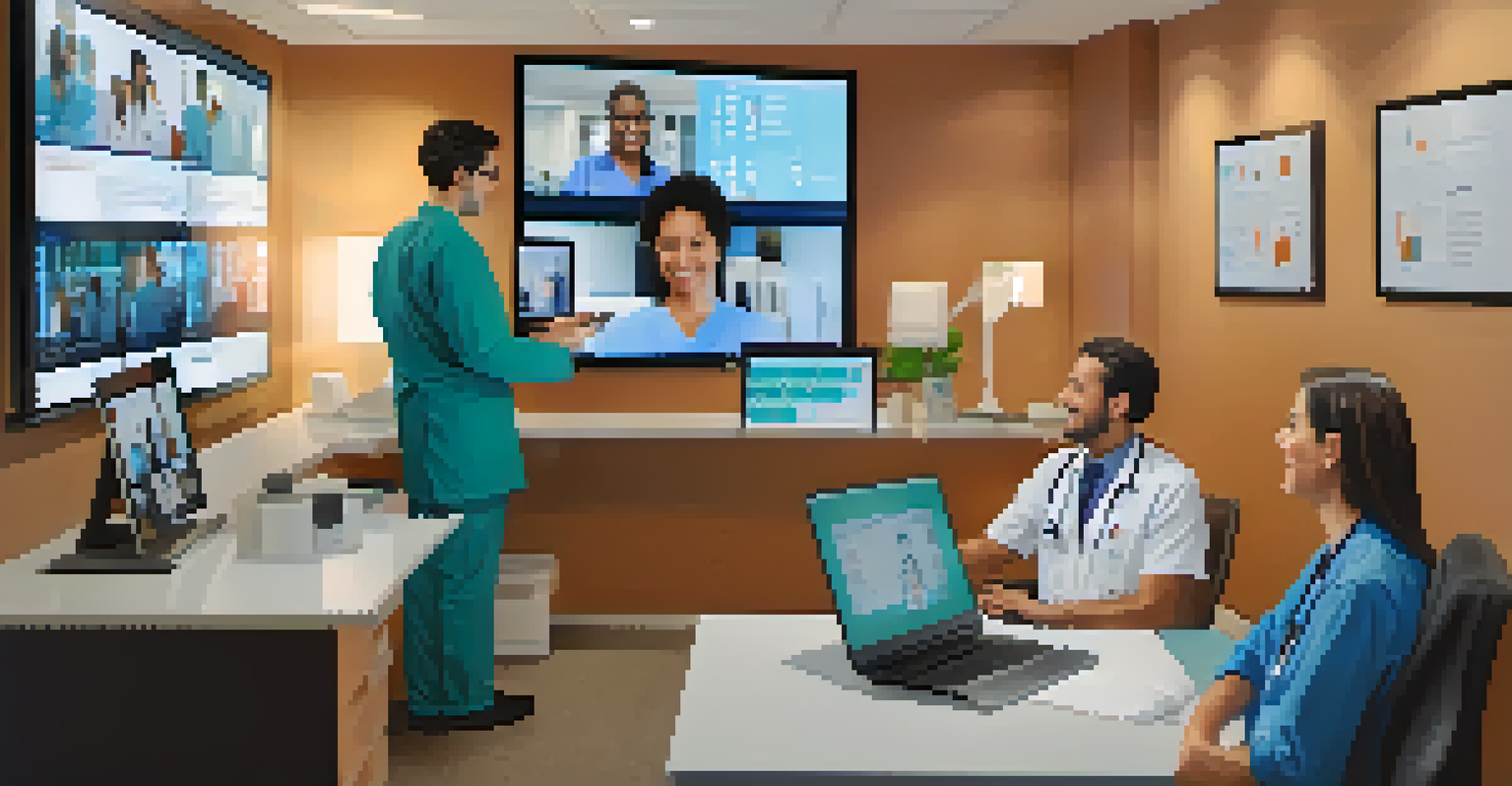The Future of Medical Simulation: Trends and Predictions

The Rise of Virtual Reality in Medical Training
Virtual reality (VR) is revolutionizing medical training by providing immersive simulations that mimic real-life scenarios. With VR, healthcare professionals can practice complex procedures in a safe environment without the risk of harming patients. This technology allows for repeated practice, helping to build muscle memory and confidence before performing actual surgeries.
Virtual reality is not just a tool for entertainment; it can play a transformative role in fields like education and medicine, allowing practitioners to hone their skills in a risk-free environment.
Moreover, VR can simulate a wide range of situations, from routine check-ups to high-pressure emergencies. This versatility is invaluable for training medical students and seasoned professionals alike, making learning both engaging and effective. As VR technology continues to advance, we can expect even more realistic and detailed simulations in the near future.
The integration of VR in medical education also promotes collaboration among peers, as multiple users can interact in the same virtual space. This fosters teamwork and communication skills, essential components in the medical field. Overall, the rise of VR is paving the way for a new era in medical training.
Artificial Intelligence: Enhancing Simulation Accuracy
Artificial intelligence (AI) is becoming a game-changer in medical simulations, enhancing their accuracy and realism. By analyzing vast amounts of data, AI can create more adaptive and personalized learning experiences for users. This means simulations can adjust in real-time based on a trainee’s performance, providing tailored feedback and challenges.

For instance, AI algorithms can simulate patient responses during a procedure, making scenarios feel more lifelike. This allows trainees to hone their decision-making skills and better prepare for unpredictable situations they might face in practice. As AI technology continues to evolve, we can expect even more sophisticated simulations that closely mirror real-life patient interactions.
VR Transforms Medical Training
Virtual reality provides immersive simulations that allow healthcare professionals to practice procedures safely, enhancing their skills and confidence.
Furthermore, AI-driven simulations offer opportunities for continuous learning and improvement. Trainees can revisit past scenarios and analyze their performance over time, leading to better outcomes. This focus on personalized learning is crucial for developing competent healthcare professionals who are ready for the complexities of modern medicine.
Interprofessional Education Through Simulated Scenarios
Interprofessional education (IPE) is gaining traction in medical simulation, promoting collaboration among various healthcare disciplines. By participating in joint simulations, students from nursing, medicine, pharmacy, and other fields can learn from each other's perspectives. This approach fosters teamwork, which is essential for delivering comprehensive patient care.
The future of healthcare lies in the integration of technology and education, creating opportunities for professionals to learn and adapt to an ever-changing landscape.
Simulated scenarios that require input from multiple disciplines allow learners to practice communication and collaboration in a controlled setting. This not only enhances understanding of each role but also builds respect and trust among future healthcare professionals. As IPE becomes more integrated into medical training, we can expect improved patient outcomes and a more cohesive healthcare system.
Moreover, IPE prepares students for the realities of working in diverse medical teams. With healthcare increasingly becoming a collaborative effort, understanding how to navigate these dynamics is vital. As such, the emphasis on interprofessional education within simulation will be crucial for shaping the future of medical practice.
Telemedicine Simulations: Preparing for Remote Care
The rise of telemedicine has transformed how healthcare is delivered, and simulation training is adapting to this shift. Telemedicine simulations allow healthcare professionals to practice remote patient interactions, honing their skills in virtual consultations. This is particularly relevant in today's world, where digital health solutions have become essential.
Through these simulations, trainees can learn to navigate various telehealth platforms, ensuring they are comfortable with the technology. Additionally, they can practice effective communication techniques, as remote consultations often lack the non-verbal cues present in face-to-face interactions. This training is vital for building rapport with patients and ensuring quality care.
AI Enhances Simulation Realism
Artificial intelligence tailors medical simulations to individual performance, improving learning outcomes through adaptive and personalized experiences.
As telemedicine continues to expand, integrating these simulations into medical training will be crucial. By preparing future healthcare providers for remote interactions, we can enhance accessibility and convenience for patients everywhere. Ultimately, this trend emphasizes the importance of adaptability in the evolving landscape of healthcare.
Gamification: Making Medical Training Engaging
Gamification is an innovative approach that incorporates game-like elements into medical simulation training. By introducing challenges, rewards, and competition, gamification can increase engagement and motivation among learners. This is particularly important in a field where the training process can often feel rigorous and demanding.
For example, simulations that feature scoring systems or time challenges can encourage trainees to improve their skills while having fun. This playful competition can lead to better retention of knowledge and a more enjoyable learning experience. As a result, gamified simulations are becoming increasingly popular in medical education.
Moreover, gamification can foster a growth mindset, encouraging students to view challenges as opportunities for learning. This shift in perspective can be beneficial as they navigate the complexities of medical training and practice. Ultimately, the integration of gamification into medical simulation is a promising trend that can enhance both engagement and educational outcomes.
The Importance of Data Analytics in Simulation Training
Data analytics is playing a crucial role in enhancing the effectiveness of medical simulations. By collecting and analyzing performance data, educators can gain valuable insights into how trainees are progressing. This information can inform curriculum improvements and help identify areas where learners may need additional support.
For instance, tracking metrics such as decision-making times or success rates in simulations can highlight patterns that might not be immediately apparent. Educators can then tailor their teaching strategies to address these specific needs, ensuring that students receive the best possible training. This data-driven approach maximizes the impact of medical simulation programs.
Interprofessional Collaboration Boosts Care
Interprofessional education in simulations fosters teamwork among various healthcare disciplines, leading to better communication and patient care.
Additionally, data analytics can support ongoing assessment and certification processes. By providing quantifiable evidence of a trainee's skills and competencies, data can help streamline evaluations and ensure that healthcare professionals are truly prepared for their roles. In this way, data analytics is set to become an integral part of the future of medical simulation.
Ethical Considerations in Medical Simulation Development
As medical simulation technology advances, so too do the ethical considerations surrounding its development and use. It's crucial to ensure that simulations accurately reflect real-life scenarios, particularly when it comes to sensitive topics such as patient interactions and cultural competence. Developers must prioritize ethical guidelines to create simulations that promote respectful and informed practices.
Moreover, the use of realistic patient scenarios raises questions about consent and representation. It's essential to consider how diverse populations are portrayed in simulations, ensuring that all individuals feel represented and respected. This focus on inclusivity is vital for preparing future healthcare professionals to serve a wide range of patients effectively.

As the field of medical simulation continues to evolve, ongoing discussions about ethical practices will be essential. By addressing these considerations, we can foster a culture of responsibility and integrity within medical training. Ultimately, prioritizing ethics will enhance the credibility and effectiveness of simulation-based education.